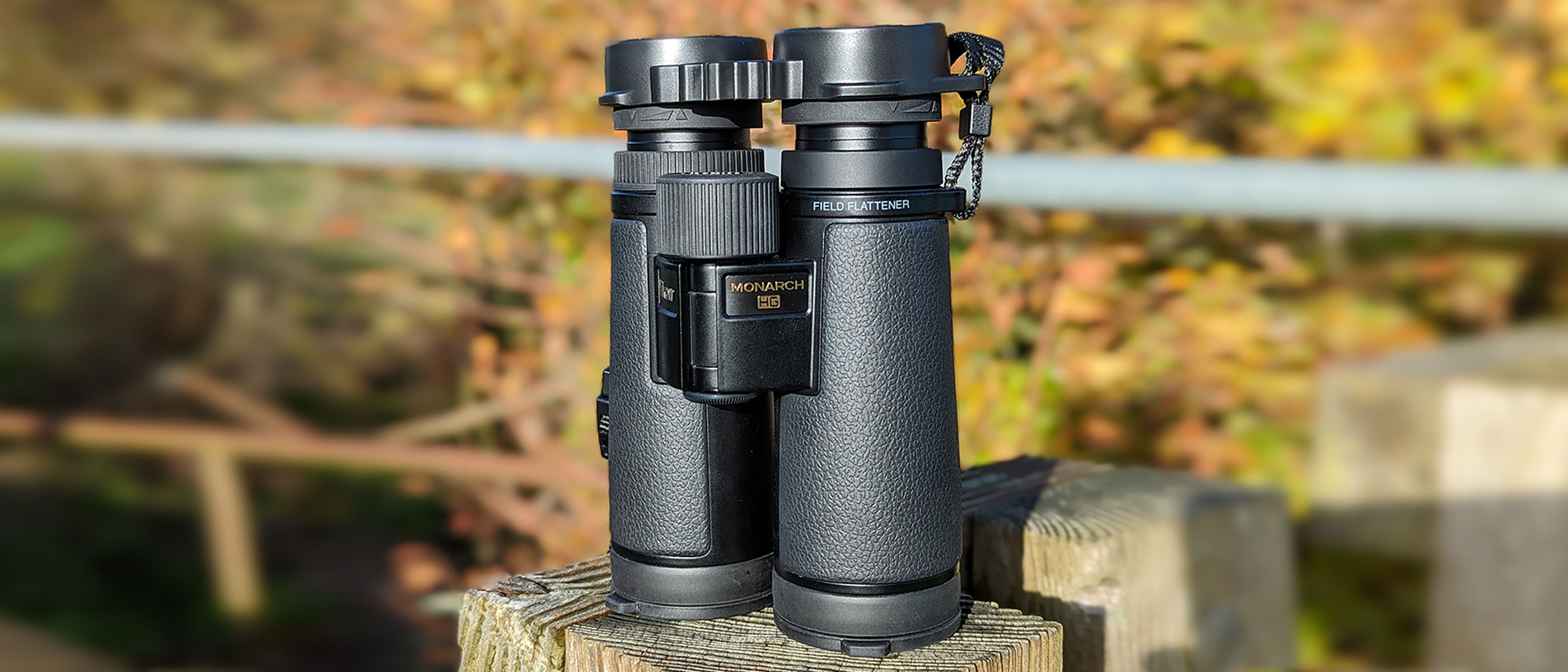Digital Camera World Verdict
An outstanding pair of roof prism binoculars, the Monarch HG 10x42s are slim, lightweight and incredibly easy to use. Nitrogen-filled, they’re also fog-proof and waterproof which means they’ll keep up with adventurous photography, in any weather conditions. We would recommend these 10x42s to anyone who wants some of the best optics on the market. The only way they could improve is if there was in-built stabilization – otherwise, they’re almost faultless.
Pros
- +
Almost zero chromatic aberration in real-world use
- +
Razor sharp views
- +
Slim and lightweight
Cons
- -
Carry bag should have neckstrap connections
- -
Small amount of color fringing
Why you can trust Digital Camera World
The Nikon Monarch HG 10x42 binoculars are roof prism binoculars designed with a Field Flattener Lens System and Extra-low Dispersion (ED) glass to provide some of the sharpest edge-to-edge views you can get. Built to the same high standard as their premium lenses, the Monarch HG line is designed for wide-field observing of birds and tracking of wild animals. Everything that these binoculars ship with feels premium, whether it’s the carry pouch, the neckstrap, or the lens caps.
At 10x magnification, they’ll get you comfortably close, visually, to your subjects, and with 42mm objective lenses they’ll let in a good amount of light to perform well even during twilight hours. Fortunately, these binoculars have been purged with Nitrogen which means they won’t fog up when observers move between cold and warm areas, plus their build is completely waterproof so you can use them in pouring rain or, if you drop them in a body of water, you can comfortably take your time fishing them out as they’ll be fine in up to five meters for up to ten minutes.
Nikon Monarch HG 10x42 Specifications
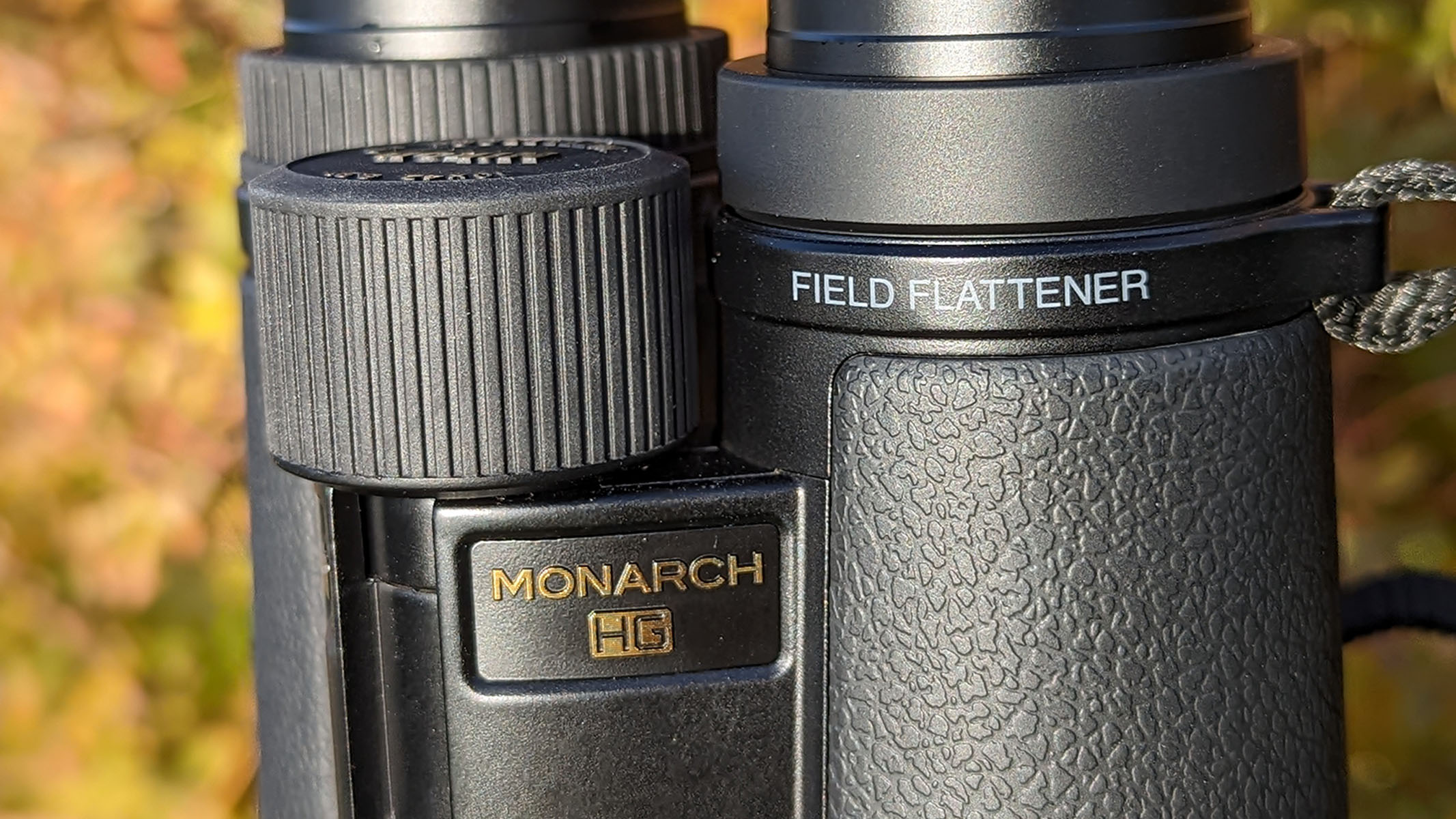
Design: Roof prism
Exit pupil: 4.2mm
Eye relief: 17mm
Weight: 680g
Dimensions: 145 x 131 x 56mm
Magnification: 10x
Objective lenses: 42mm
Durability: Waterproof and fog proof
Nikon Monarch HG 10x42 Key Features
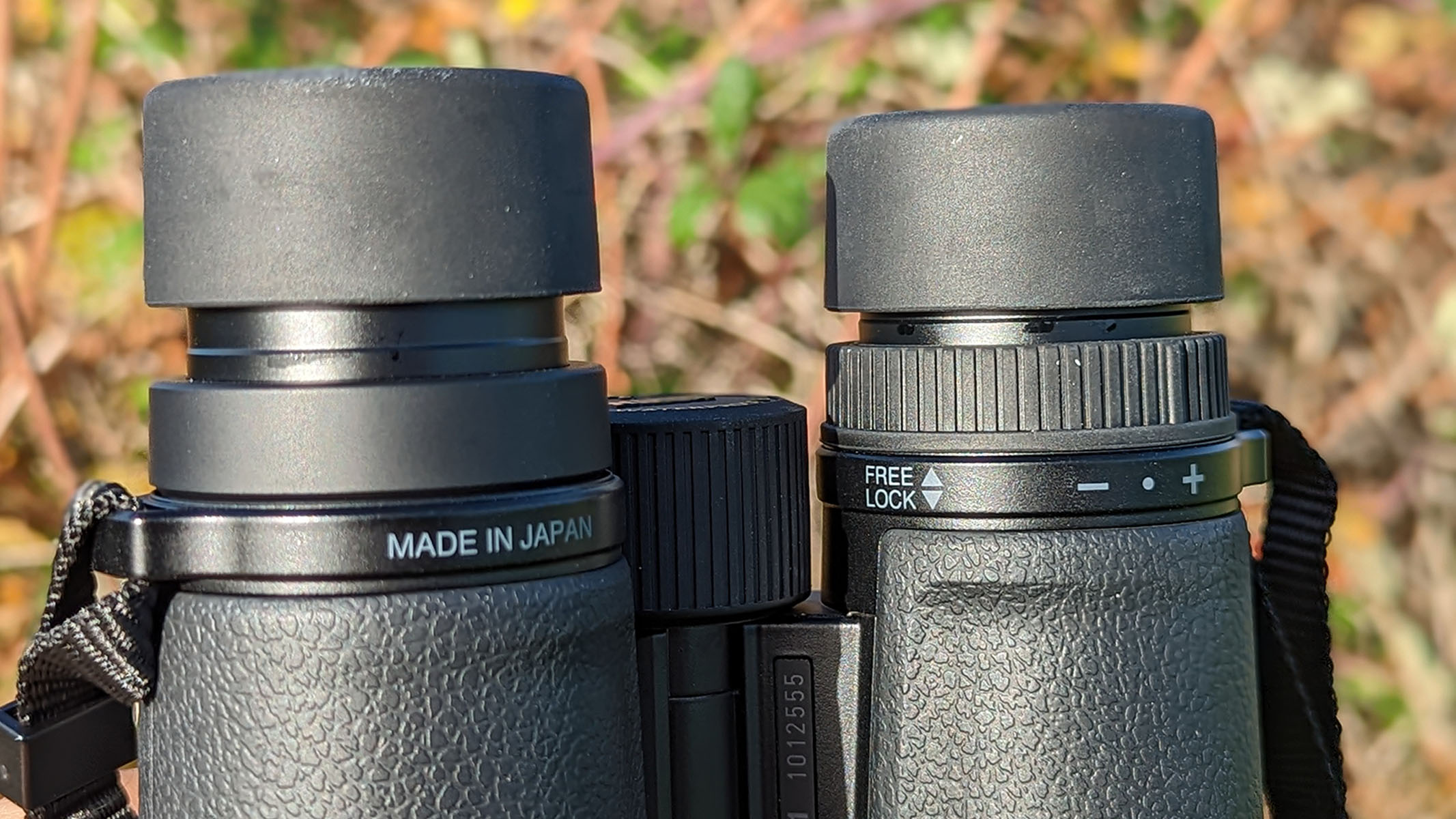
Upon opening the box of the Nikon Monarch HG 10x42 binoculars one thing is immediately apparent, everything looks and feels premium. From the excellent solid build quality, we’ve come to know and love from Nikon to the comfortable grip, the way the eye relief and dioptre operate, and even the gold flashing across the instrument. No stone has been left unturned in the design department.
The carry pouch has a reassuring fastener, topped with a metal name badge on the lid. The neck strap is made of what feels like, a soft, cushioning neoprene that doesn’t wear on the neck as thinner plastic neck straps do. The objective lens caps are also attached to the ends of the binoculars so when you whip them off to take a look through they won’t get lost on the floor or in the bag. The eyepiece caps are joined together and include a strap attachment so users can pop them on and off quickly when using them in the field.
Nikon Monarch HG 10x42 Build & Handling
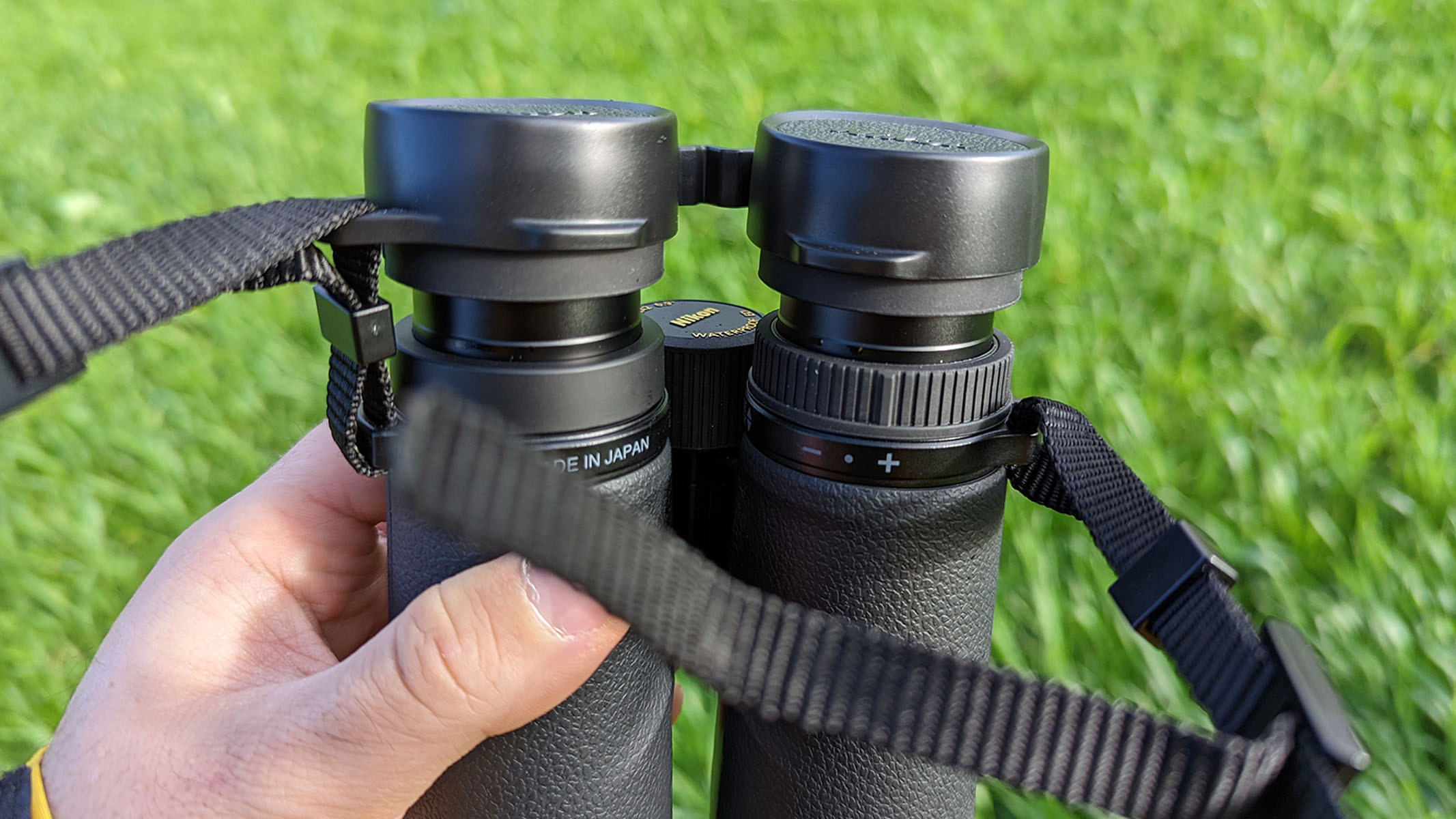
The Monarch’s feel confidently solid in the hand, but still soft to the touch thanks to the rubberized armoring that surrounds the magnesium alloy body. Despite being made of metal Nikon has kept the weight down thanks to the use of the magnesium allow and the binoculars weigh in at a comfortable 680g.
The focus wheel is ultra smooth, akin to Nikon’s Z-mount lens’ focusing rings, but provides just enough tension in the rotation to prevent accidental defocusing while in use. The wheel is also incredibly accurate, with plenty of movement in the focus allowing observers to fine-tune their focusing spot.
The only area we think these binoculars could be improved is by incorporating stabilization. Compared to Canon’s 10x32IS they were slightly more difficult to hold still when tracking wildlife because there’s no in-built mechanism to keep things steady. That said, if you’re going to keep any traditional, non-stabilized binoculars steady then it’s these ones thanks to their lightweight and comfortable hand grip. Stabilization is very much not the norm in binoculars, so that’s why it only nicks half a star off an otherwise perfect five-star review.
What we really cooed over during this review of the Nikon Monarch HG 10x42 binoculars is the diopter adjustment ring. Inevitably, when using a pair of binoculars you’ll find at some point that no matter how careful you are setting up the dioptre (to account for focusing differences between your eyes) it will get bumped and moved, and you’ll have to set it up all over again.
However, Nikon has cleverly put in a clutch-like mechanism to lock the dioptre into place. If you want to change it, simply pull up on the dioptre lock ring and rotate as necessary. Then, when you’re ready, push it back down and the dioptre will lock into place for good.
Nikon Monarch HG 10x42 Performance
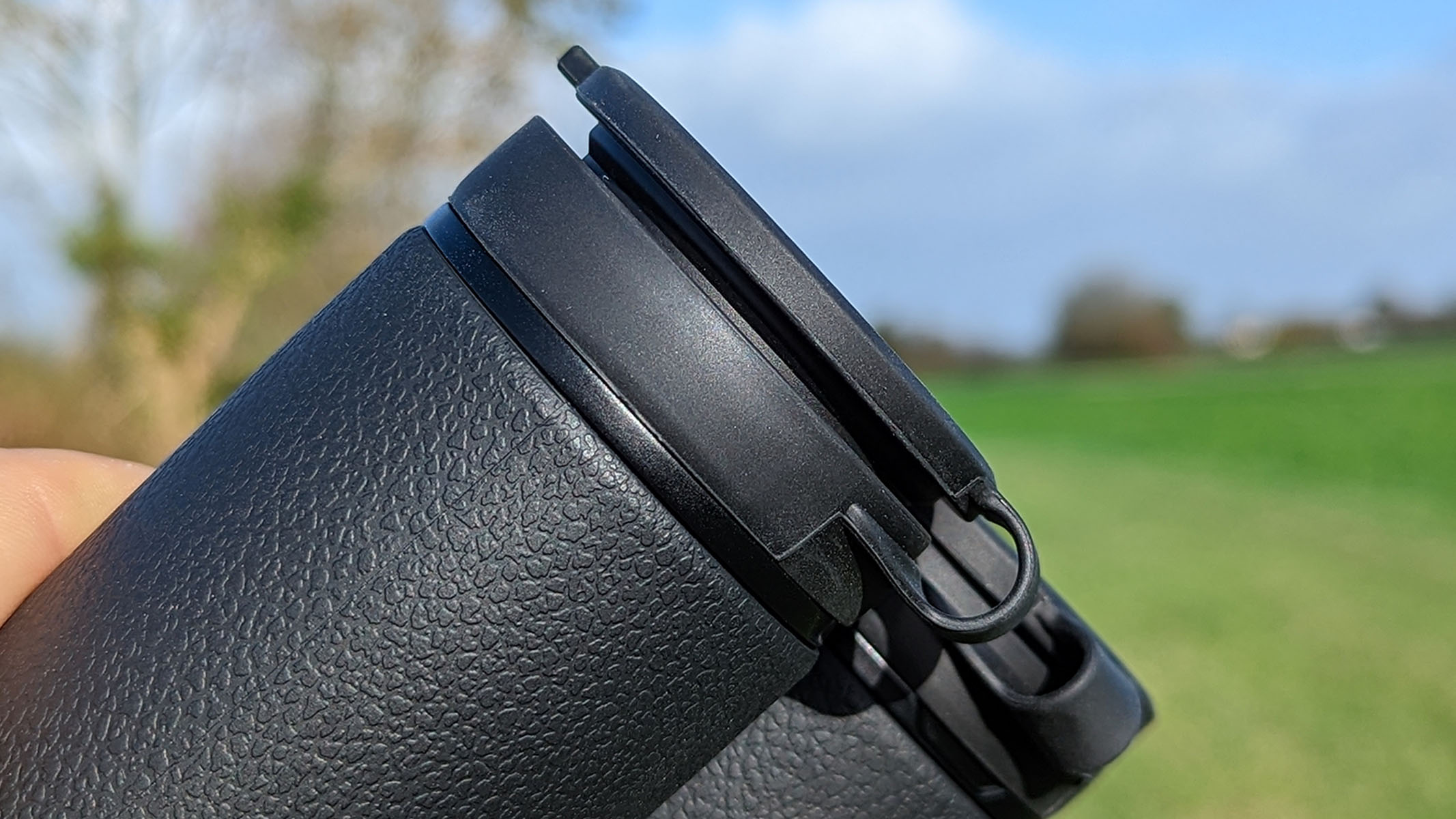
If you want to look through a pair of binoculars that contain almost no chromatic aberration (color fringing) then pick up the Monarch HG 10x42s. Even on the brightest of days with the Monarchs pointed toward the underside of a wooded area, flanked by bright blue, cloudless skies, it was hard to make out any chromatic aberration at all. Only when we really analyzed the scene did we spot a little magenta or purple color fringing around the most contrasted of edges.
This is all thanks to Nikon’s Extra-low Dispersion (ED) glass which helps to converge the whole gamut of color into a single point so that light and colors appear as they do to the naked eye. Combine this with supreme sharpness edge-to-edge and, in our experience, it’s as good as optical clarity gets in binoculars. Nikon has utilized a Field Flattener System to ensure that things don’t go soft towards the edge of the viewing circle and rely on multilayer coating on all glass and prism elements in the instrument to improve light transmission (reportedly 92% or greater transmittance).
Thanks to their wide field of view (121m at 1000m) it’s easy to spot and track wildlife, with higher magnification binoculars making it much more difficult to keep animals in view to track their movement. They can also be used handheld without any fuss but Nikon includes an attachment connection, as most binoculars have, on the front of the design which is accessible by unscrewing the Nikon badge and threading the binoculars onto an appropriate tripod mount or adapter.
Nikon Monarch HG 10x42 Competitors
While the Monarchs reviewed here are outstanding there are plenty of other binoculars that are up to the job of competing with Nikon in this category. The aforementioned Canon 10x32IS binoculars are a bit of a side-step in that they only have 32mm objective lenses but contain image stabilization technology, but surprisingly they’re only around £400 more expensive, which if you’re already splashing out a grand on a pair of binoculars, maybe the better move if you have unsteady hands.
If you’re not too bothered about the compactness of a roof prism design and want to spend about a tenth of the price then the Nikon 10x50 Aculon A211 binoculars are a great option. With potentially brighter views than the Monarchs due to the larger 50mm objective lenses, they’re a great first pair of binoculars if you want to get started without dropping too much cash.
Nikon Monarch HG 10x42 Verdict
Overall, the Monarch HG 10x42s aren’t a pair of binoculars you’re going to buy as your first pair unless you have a substantial budget. However, their optical prowess, durable build quality, and overall premium finish make them one of the best binoculars you can buy.
We were really impressed with every inch of these binos and love how lightweight they are. Seeing as they’re slim enough to fit in a (large) coat pocket, and the neoprene-like neckstrap is super smooth and cushioned, we probably wouldn’t want to take them off except for having lunch or dinner.
Jase Parnell-Brookes is an award-winning photographer, educator and writer based in the UK. They won the Gold Prize award in the Nikon Photo Contest 2018/19 and was named Digital Photographer of the Year in 2014. After completing their Masters Jase has spent a good chunk of two decades studying and working in photography and optics shooting and writing all over the world for big-name brands and media outlets. Now the Channel Editor for Cameras and Skywatching at Space.com their speciality is in low light optics and camera systems.
- Lauren ScottFreelance contributor/former Managing Editor
